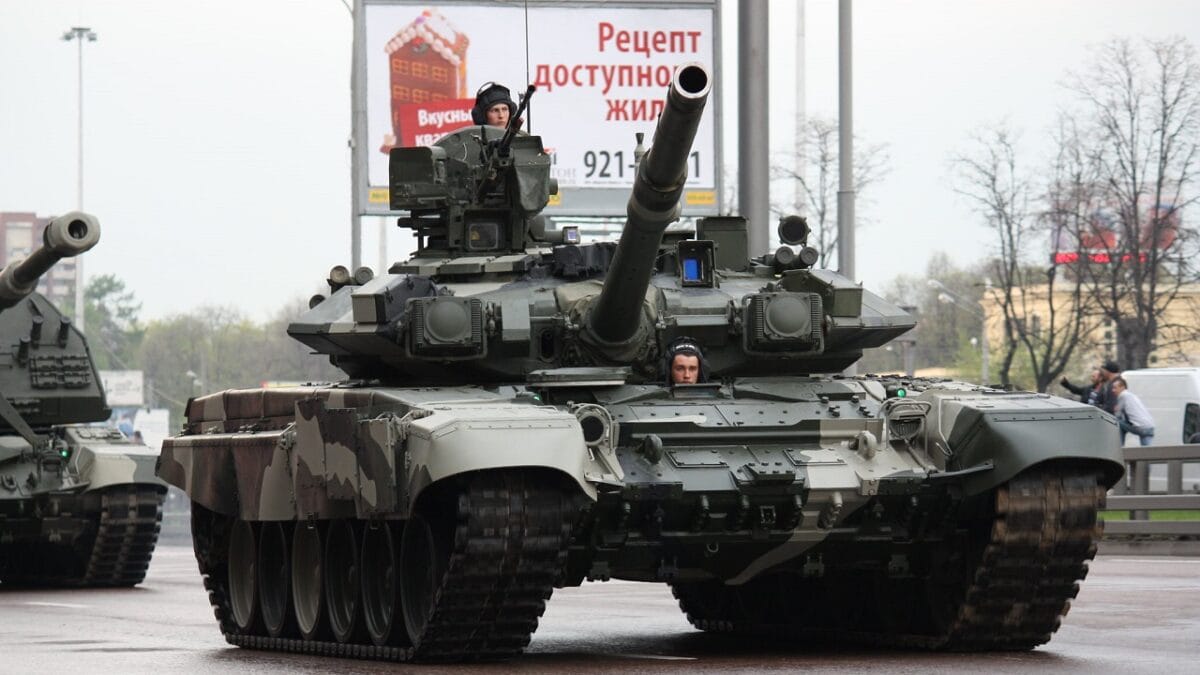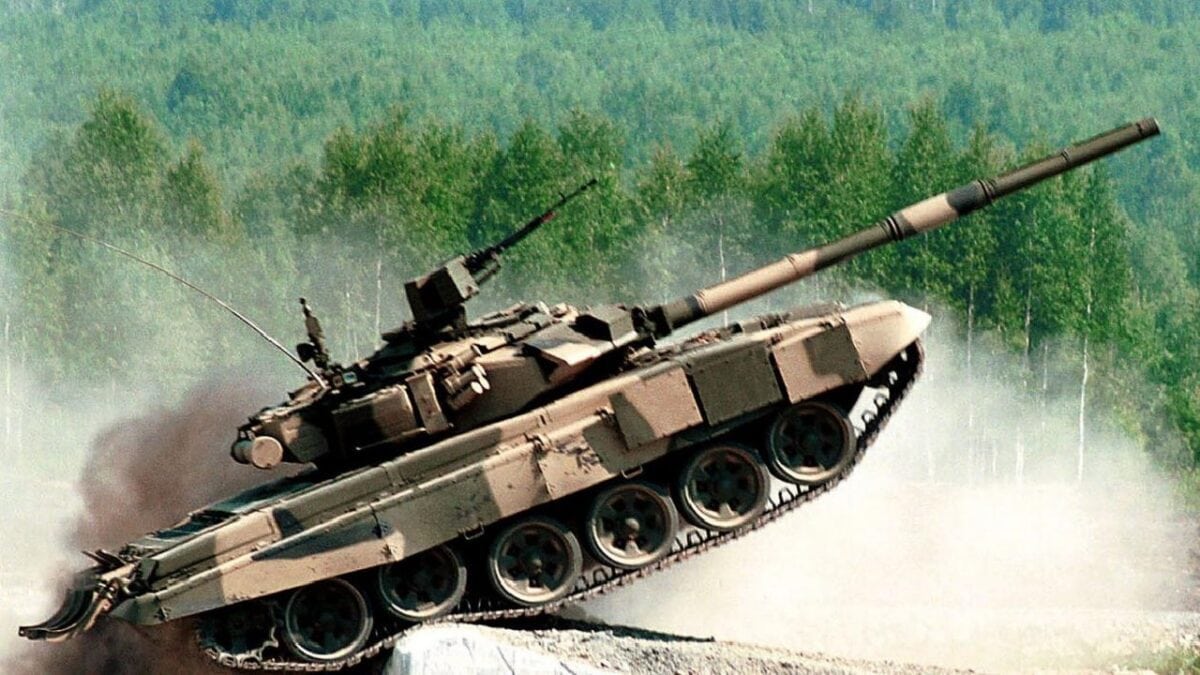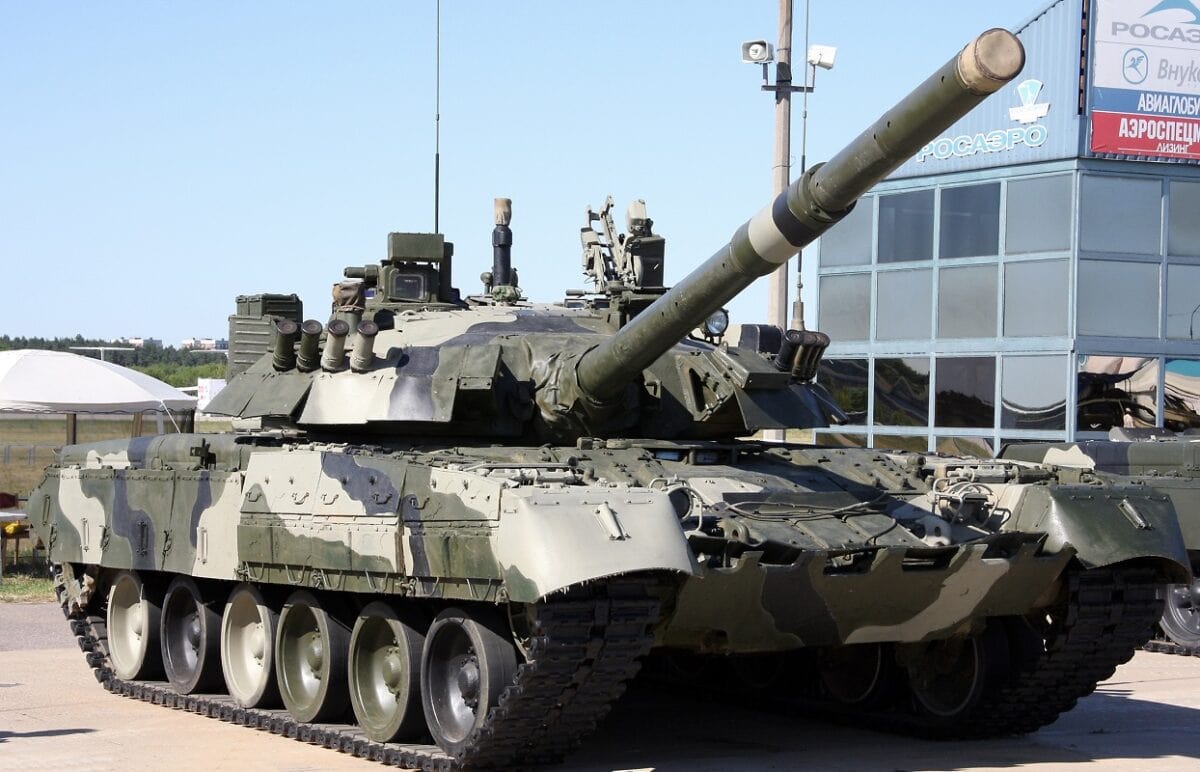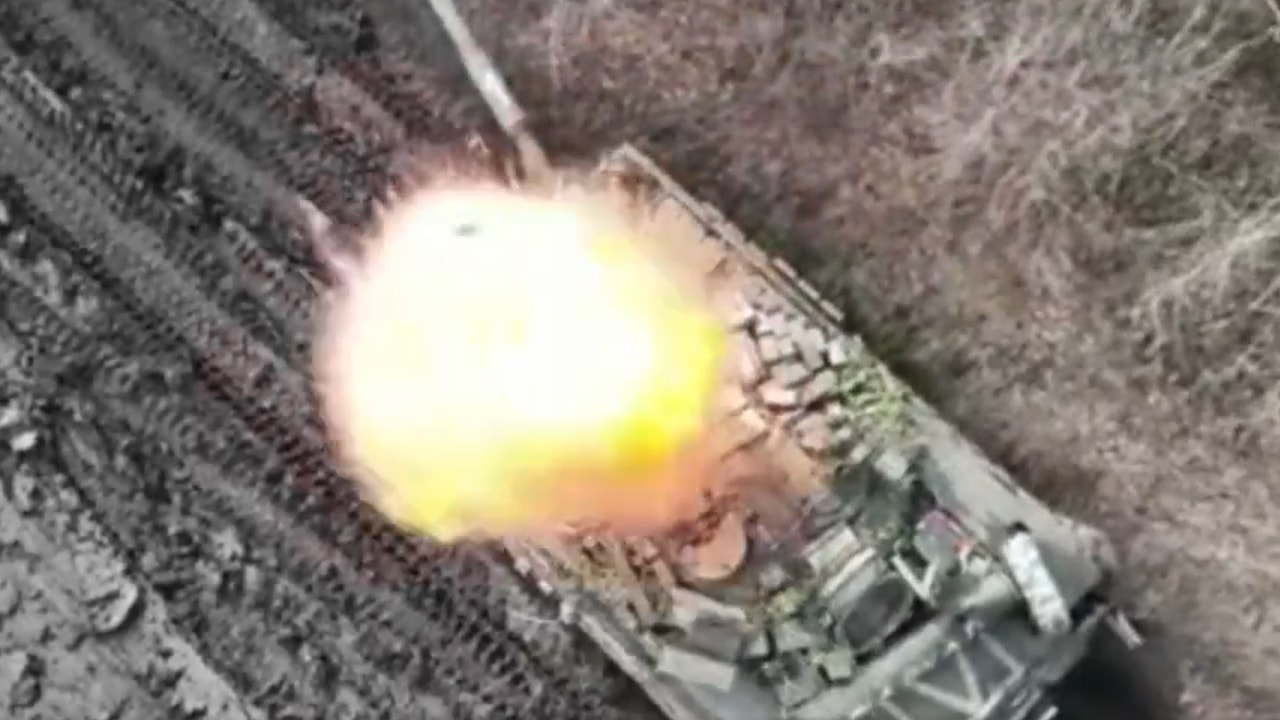In the 1970s and 1980s, the Soviet Union made a specific, Cold War-focused effort to build an upgraded main battle tank variant to extend beyond and improve the capabilities of the T-72. The T-80, as its called, incorporated and advanced many elements of the well-known T-72, yet added some critical attributes such as a “gun-tube launched anti-tank guided missile,” according to a 1995 Threat Update for U.S. Forces Command OPFOR Training Program, published in Red Thrust Star.
Building Up the T-80
The T-80 uses the same 125mm smoothbore main gun as the T-72 yet is able to fire hypervelocity armor-piercing fin-stabilized sabot rounds able as far as 4,500 meters. The tank can fire six to eight rounds a minute and carry 28 rounds in the autoloader, the text explains.
“The T-80 fires the same rounds as the T-64B and T-72. These ammunition types include Frag-HE fin-stabilized (FS), HEAT-FS, and HVAPFSDS. With the AT-8/SONGSTER, the T-80 can range targets out to 4,000 meters. The T-8OUD variant is equipped to fire the AT-11/SNIPER (Russian nickname Svir) laser beam-riding ATGM,” the Red Thrust Star paper states.
Moving beyond the T-72, the T-80U integrates an improved engine, additional enhanced armor, advanced dual-firing technology, and a computerized fire-control system able to destroy both stationary and moving targets.
While a FAS report makes it clear that these upgrades were added, there is little indication as to the functionality of capability of the computing.
For instance, computerized fire control would be critical should Russia integrate an active protection system into the T-80, also a true ability to track and destroy moving targets would depend upon the range, fidelity, precision, and guidance technology of its sensors and weapons systems.
The T-80 is a Lightweight
The T-80 also appears to suffer an additional deficit, such as its survivability. The T-80 is listed as having a weight of only 45 tons, a size much smaller than the 70-ton U.S. Abrams.
While a smaller size might enable greater mobility to cross bridges or access more narrowly configured passageways, it might make for a much less survivable vehicle and make the tank far more vulnerable to being destroyed or disabled by incoming enemy fire.
An Anti-Tank-Guided-Missile or even an RPG, for example, would cause far more damage to a 45-ton vehicle than it would to a more heavily armored 72-ton Abrams, leading one to question the wisdom of its true utility when it comes to heavy mechanized warfare. The FAS report argues that frontal reactive armor makes the T-80 “frontal arc” immune to NATO ATGMs.

The T-90 is a Russian main battle tank (MBT) derived from the T-72, and is currently the most modern tank in service with the Russian Ground Forces and Naval Infantry. The successor to the T-72BM, the T-90 uses the tank gun and 1G46 gunner sights from the T-80U, a new engine, and thermal sights. Protective measures include Kontakt-5 ERA, laser warning receivers, the EMT-7 electromagnetic pulse (EMP) creator for the destruction of magnetic mines and the Shtora infrared ATGM jamming system. It is designed and built by Uralvagonzavod, in Nizhny Tagil, Russia.

Russian T-80 Tank. Image Credit: Creative Commons.

Image: Creative Commons.
This claim may no longer be true in light of advancements in ammunition, penetrating rounds and explosives, or warhead improvements. The FAS essay was written in 2000, and technology has progressed much in recent decades, so it seems unlikely that a T-80 would not be vulnerable to multiple kinds of anti-armor weapons, particularly given its smaller size.
Also, perhaps somewhat surprisingly, the T-80’s smaller size does not necessarily translate into an impactful difference in speed. Available specs list the T-80s speed at 50mph, which is only slightly faster than the Abrams which can travel up to 45mph.
MORE: The F-35 Now Comes in Beast Mode
MORE: Why the U.S. Navy Tried to Sink Their Own Aircraft Carrier
Kris Osborn is the Military Affairs Editor of 19FortyFive and President of Warrior Maven – Center for Military Modernization. Osborn previously served at the Pentagon as a Highly Qualified Expert with the Office of the Assistant Secretary of the Army—Acquisition, Logistics & Technology. Osborn has also worked as an anchor and on-air military specialist at national TV networks. He has appeared as a guest military expert on Fox News, MSNBC, The Military Channel, and The History Channel. He also has a Masters Degree in Comparative Literature from Columbia University.

